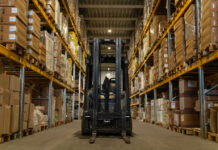The warehousing and storage industry is constantly evolving. Industry Experts, Like Brightkey, Inc in Annapolis, Maryland, know that as technology changes, so does the way businesses store and manage their inventory. This article discusses some of the latest trends in warehousing efficiency. We also explore how new technologies change how businesses operate their warehouses.
Warehousing Efficiency
When it comes to running a warehouse, efficiency is critical. Efficiency measures how well a warehouse can store and distribute products. Several factors contribute to warehousing efficiency, including the layout of the storage area, the use of technology, and the training of employees. A well-run warehouse should be able to meet the needs of its customers in a timely and cost-effective manner.
Brightkey, Inc specialists say one of the most critical aspects of warehousing efficiency is having an effective storage system. The storage area’s layout can significantly affect how quickly products can be retrieved and sent out. In many cases, an inefficient storage system can lead to products being lost or damaged. Technology can also play a role in warehousing efficiency. For example, barcodes and RFID tags are used for packing slips for the Manifest System to process orders quickly. Finally, employee training is also essential. Employees who are properly trained will be able to work more efficiently and avoid making mistakes that could lead to delays.
By taking steps to improve warehousing efficiency, businesses can keep their costs down and better meet the needs of their customers.
Trends in Warehousing
The way businesses operate their warehouses is constantly changing. In recent years, many trends have had an impact on the way they are run. Here are some of the most notable trends:
E-commerce
The growth of e-commerce has had a significant impact on warehouse operations. E-commerce businesses need to be able to store and ship products quickly and efficiently. As a result, many warehouses have been designed with e-commerce in mind. This includes having dedicated storage areas for items that need to be shipped quickly and using technology such as order management systems to keep track of inventory levels.
Outsourcing
Another trend that has emerged in recent years is outsourcing. With the rise of e-commerce, many businesses have found it more cost-effective to outsource their warehouse operations. This allows them to focus on their core businesses and leave the logistics to others.
The Impact of Technology
Experts at Brightkey, Inc say warehouses are integral parts of the supply chain, and their efficiency can significantly affect a company’s bottom line. In recent years, technological advances have led to substantial improvements in warehouse efficiency. One of the most important technologies is the barcode scanner. By digitizing inventory data and tracking every movement, barcode scanners have significantly reduced the margin for error.
Another critical technology is warehouse management software (WMS). WMS systems help to optimize space usage and track inventory levels. They allow managers to make more informed decisions about stock levels and order fulfillment. Finally, conveyor belts and other automated material-handling equipment have made it possible to move inventory faster and more accurately. Because of these technologies, warehouses can now operate at a higher efficiency level than ever before.
The Changing Nature of the Workforce
The changing nature of the workforce is profoundly affecting the efficiency of warehouses. In the past, most were staffed by full-time employees who worked regular hours. However, today’s warehouses are increasingly relying on part-time and temporary workers. This shift has created new challenges for managers. First, maintaining a consistent workforce can be more difficult when employees are coming and going regularly.
Secondly, part-time workers may not have the same level of commitment to their jobs as full-time employees, which can lead to lower productivity levels. Finally, turnover can be expensive, as training new employees take time and money. Despite these challenges, using part-time and temporary workers can help improve warehouses’ efficiency by providing flexible workforces that can be quickly scaled up or down as needed.
How to Stay Ahead of the Curve
The warehousing industry is constantly changing, and it can be challenging to keep up with the latest trends. One way to stay ahead of the curve is to invest in technology. Using some of best warehouse management software, Brightkey, Inc has an in-house WMS solution created in .net using SQL. Another way to stay ahead of the curve is to train your employees.
Brightkey, Inc experts say that by ensuring that your employees are up-to-date on the latest changes in warehouse operations, you can ensure that they can work effectively and efficiently. Finally, staying informed about changes in the marketplace is also essential. Understanding how customer needs change can ensure that you meet those needs.
Conclusion
The warehousing industry is constantly evolving, and it can be challenging to keep up with the latest trends. However, by investing in technology and keeping your employees trained, you can ensure that your warehouse is continuously operating at its best. Stay informed about changes in the marketplace, and be sure to understand how customer needs are changing. By following these tips, you can stay ahead of the curve.
Find a Home-Based Business to Start-Up >>> Hundreds of Business Listings.

















































